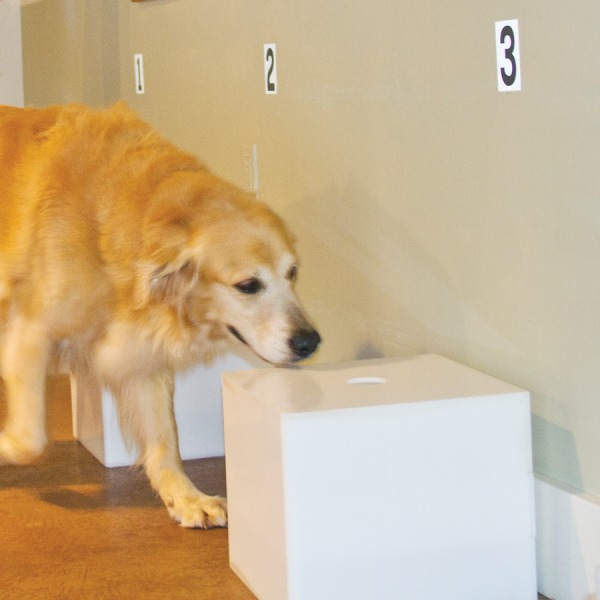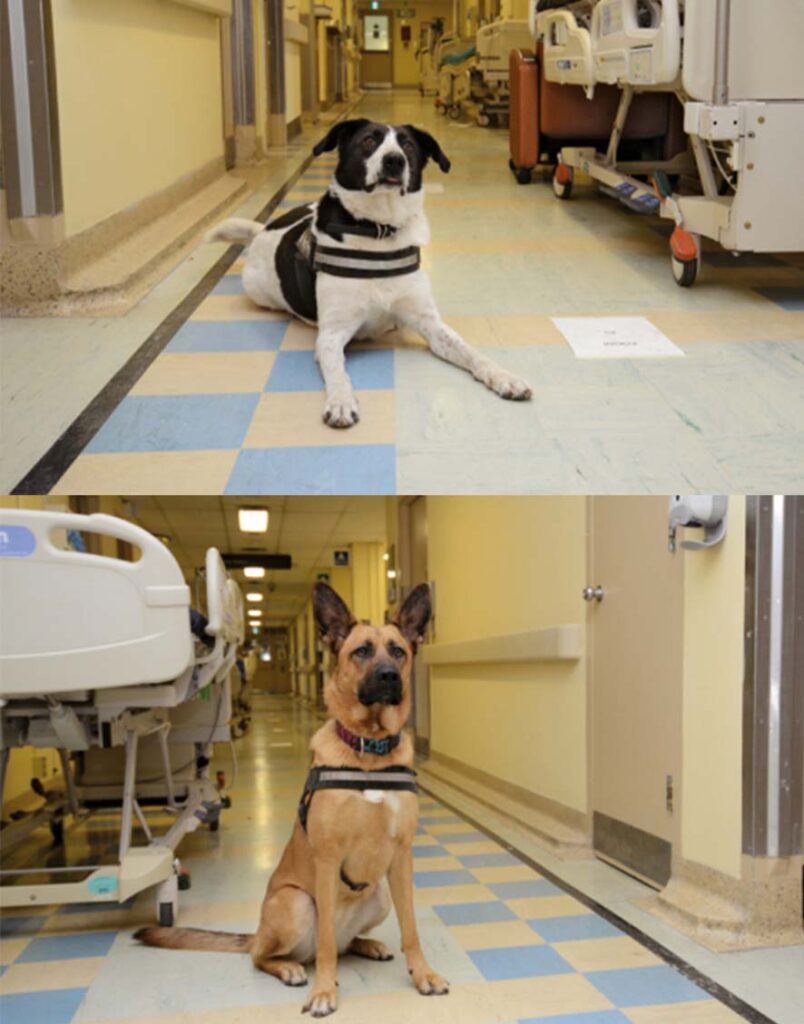
Sit. Stay. Roll over. Diagnose an infection? It seems that, in addition to being man’s best friend, dogs make pretty good infectious disease doctors. Or at least that’s the conclusion of two studies which trained dogs to identify UTIs or C. difficile infections in real patient samples. The results were impressive!
In the first study, Sam (pictured right) and other dogs were trained to identify the presence of bacteria. They were then tested with 687 urine samples, one-third of which were infected. These dogs correctly identified the UTI samples at near 100% accuracy. This stellar success rate was not affected by pathogen either, as dogs were able to identify E. coli, Enterococcus, Klebsiella, and S. aureus all at greater than 99% sensitivity and 91% specificity. Even when samples were diluted 1:1000, UTI samples were correctly identified 100% of the time.

In another study, two dogs (Piper and Chase, pictured left) were trained to identify toxin-positive C. difficile in stool samples, which they were able to do at 80-90% sensitivity and ~85% specificity.
While you are unlikely to start seeing dogs in your local microbiology laboratory any time soon, this phenomenon is not without real-world applications. As the first study notes in its discussion:
“One month after the study was completed, 1 of the dogs (Abe) spontaneously alerted to a person visiting the training center. The patient had been feeling ill, but had not suspected a UTI. Based on Abe’s alerting behavior, the patient had a medical exam and a urine culture was performed the next day, and physicians confirmed bacteriuria and a clinical diagnosis of UTI.”
That being said, there is a leap between the olfactory doggy detection of bacteria and the clinical diagnosis of infectious syndromes based on symptoms…and I can’t even get my dog to consistently lay down on command. For more details, methods, and study design, see the links below.
Study 1: Maurer M, McCulloch M, Willey AM, Hirsch W, Dewey D. Detection of Bacteriuria by Canine Olfaction. Open Forum Infect Dis. 2016;3(2):ofw051. Published 2016 Mar 9. doi:10.1093/ofid/ofw051
Study 2: Taylor MT, McCready J, Broukhanski G, Kirpalaney S, Lutz H, Powis J. Using Dog Scent Detection as a Point-of-Care Tool to Identify Toxigenic Clostridium difficile in Stool. Open Forum Infect Dis. 2018;5(8):ofy179. Published 2018 Aug 22. doi:10.1093/ofid/ofy179